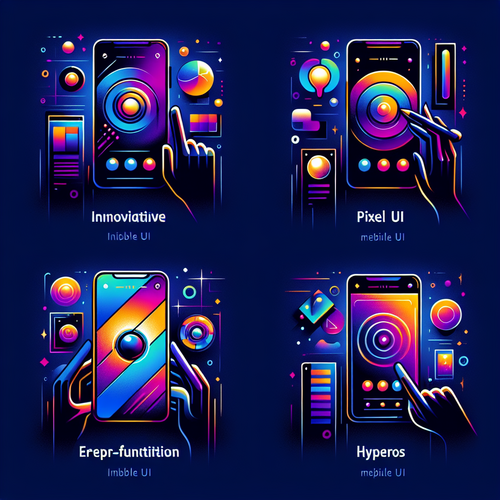
Comparing New Android Skins: One UI vs Pixel UI vs ColorOS vs HyperOS in 2025
Comparing New Android Skins: One UI vs Pixel UI vs ColorOS vs HyperOS in 2025
As we step into 2025, the landscape of Android smartphones is more vibrant than ever, with manufacturers continuously pushing for more refined and user-friendly interfaces. In this guide, we’ll delve deep into the four major Android skins – One UI, Pixel UI, ColorOS, and HyperOS, examining their unique features, strengths, and weaknesses to help you choose the best one for your needs.
Prerequisites
- A basic understanding of Android operating systems.
- Familiarity with smartphone user interfaces.
- A 2025 Android smartphone or an emulator for hands-on experience.
1. Overview of Android Skins
Android skins are custom user interfaces developed by smartphone manufacturers that run on top of the Android operating system. They enhance user experience through unique designs, features, and functionalities. Let’s explore each of them in detail:
1.1 One UI
Developed by Samsung, One UI has rapidly gained popularity for its clean design and user-friendly interface. Its key features include:
- Enhanced One-Handed Use: One UI adjusts visual elements to the bottom of the screen, making it easier to navigate with one hand.
- Dark Mode: A consistent dark theme that reduces eye strain.
- Customization Options: Users can personalize their home screens, widgets, themes, and icons.
1.2 Pixel UI
Pixel UI is the user interface utilized by Google on its Pixel devices. Known for its simplicity and integration with Google services, it offers:
- Pure Android Experience: A bloatware-free interface with regular updates and features.
- Smart Features: Integration with Google Assistant and AI-driven suggestions.
- Visuals: Clean aesthetics with adaptive colors and fluid animations.
1.3 ColorOS
Developed by OPPO, ColorOS is known for its rich features and vibrant design. Key attributes are:
- Gaming Mode: Special features that optimize gameplay performance.
- AI Beautification: Enhancements for photo editing and selfies using AI.
- Customization: Users can explore various themes, fonts, and icon styles.
1.4 HyperOS
A rising player in the Android skin game, HyperOS emphasizes flexibility and adaptability. Unique aspects include:
- Modular Design: Users can pick and choose which features to install and use.
- Advanced Privacy Controls: Hierarchical settings for app permissions and data management.
- Dynamic Updates: A system that allows real-time updates without requiring system restarts.
2. Comparative Analysis
Let’s compare these skins across several parameters:
2.1 User Interface and Experience
One UI provides a balanced approach aimed at ease of use. Pixel UI, with its minimalistic design, caters to those who prefer straightforward functionality. ColorOS focuses on vibrant themes and rich UI elements, while HyperOS appeals to advanced users wanting operational flexibility.
2.2 Features and Functionality
One UI’s features are geared toward productivity. Pixel UI sports the latest Google innovations like call screening and live transcription. ColorOS shines with its gaming features, and HyperOS offers customizable functionalities driven by user preferences.
2.3 Performance
All four skins perform well, but One UI and Pixel UI tend to be optimized for smoother performance across devices. ColorOS has significant enhancements for gaming, while HyperOS’s modular design could mean varying performance based on user choices.
3. Troubleshooting Common Issues
Users may encounter some common issues when working with these Android skins:
- Slow Performance: Clear cache or optimize memory settings as necessary.
- Battery Drain: Check for background apps and disable unnecessary features.
- App Compatibility Issues: Ensure that applications are updated, and consider alternatives if persistent issues arise.
4. Summary Checklist
- Evaluate your usage style: Are you a gamer, a casual user, or someone who prefers minimalism?
- Assess the customization features: Do you prioritize personalization?
- Consider longevity: How often do you expect updates and support from the manufacturer?
For a deeper dive into recent hardware changes and the overall smartphone experience, check out our related article on Phone Cameras vs DSLR in 2025.
Conclusion
Choosing the right Android skin in 2025 depends largely on personal preference and specific needs. Whether you lean towards the functionality and customization of One UI, the simplicity of Pixel UI, the vibrant features of ColorOS, or the flexible nature of HyperOS, each option has its strengths that cater to different types of users. We hope this guide aids you in making an informed choice!














